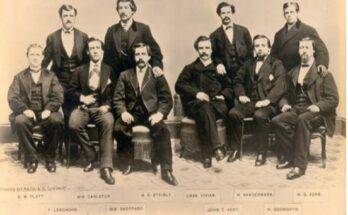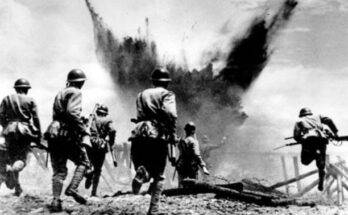Popular Culure in 1980’s

List of 1980s Most Important News Events
- In what is known as the “Miracle on Ice,” the US beats the Soviet Union in ice hockey.
- On May 18, in Washington, Mount St. Helens erupted, killing 57 people.
- In September 1980, the Iran-Iraq War officially began.
- On June 1, CNN (Cable News Network) launched its broadcasts.
- Post-It Notes, created by Arthur Fry and Spencer Silver, are 3M’s newest invention, and sales have started.
John Lennon, a former Beatle, is killed by a gunshot.
- Southern US Summer Heat Wave Kills 1,117 People in 20 States
- The “Crude Oil Windfall Earnings Tax Act” is passed in the US, taxing oil firms’ large profits.
- The MGM Grand Hotel in Las Vegas is destroyed by fire
- John Wayne Gacy Jr. was given the death penalty for the murder of 33 youths and young men.
The events listed below and others not mentioned below have further information.
1980 Facts Important Events, Popular Culture, Prices, and People Born This Year
What occurred in 1980? The biggest news stories were the murder of John Lennon in New York, the release of Post-It Notes, the riots in Miami, the burning down of the MGM Grand in Las Vegas, and the passing of the Crude Oil Windfall Profits Tax Act. Domestic camcorders and fax machines are two examples of new consumer items made possible by technology as miniaturization progresses. The advent of the Pac-Man arcade game is another noteworthy development. The US’s decision to boycott the Olympics in Moscow and the subsequent outbreak of war between Iraq and Iran bring politics into the Olympic Games. Natural catastrophes also had a horrible year this year, with the Mount St. Helens explosion on March 27 and a severe heat wave in the US. The world watches the popular soap opera Dallas to find out who shot JR.
Post-It Notes 3M starts selling its newest product, the Arthur Fry and Spencer Silver-created Post-It Notes. Additional details on producing Post-It Notes
In April 1980, Post-It noted made its official debut in American retail establishments. The novel item was a square, yellow notepad with a thin, sticky adhesive strip on the back of each note, allowing it to be removed. The product was developed in 1974 by scientists Spencer Silver and Art Fry for the 3M firm. Fry got the notion to apply the glue on a letter after Silver had already made it. The “Press n’ Peel” notes were then tested on the market in 1978. By 1980, demand for the product had grown, and they had been formally added to shop shelves throughout the nation.
Few musicians had as much elegance as Madonna did throughout the decade known as the 1980s. Her smash single “Material Girl” from 1984 spoke much about what was known as an image-driven decade. The 1980s saw significant improvements in the level of living for Americans. The new, extended function of television was one important development. Although it was accessible in the 1970s, CABLE TV eventually became the norm in most American homes.
A tonne of new programming was introduced as a result of this shift.American sports fans had access to the ESPN network around-the-clock. NICKELODEON appealed to the baby boomers by airing reruns of vintage comedies at night and to the offspring of the boomers with youth-focused daily programming. By viewing CNN, Americans may stay current on the news anytime.
The recording business saw a change thanks to MTV or Music Television. MTV aired covers of well-known songs in music videos. MTV revolutionized popular music in 1981 with the prescient Buggles song “Video Killed the Radio Star.” Music and image might be communicated much more effectively by stars like Madonna and Michael Jackson. The theme of Madonna’s song “MATERIAL GIRL” symbolized the decade’s growing materialism.
The “Garbage Pail Kids” collecting cards, which were vulgar, crass, and obnoxious, swept the nation in the 1980s. These children, whose names included “Potty Scotty” and “Barfin’ Barbara,” were a response to the Cabbage Patch Kids, another craze of the time.
The VIDEOCASSETTE RECORDER (VCR) made it possible for Americans to see feature films in the comfort of their own homes as well as record television programs to watch at a later time.
The personal computer was perhaps the device that brought about the most significant transformation in American lifestyles throughout the 1980s. The personal computer, introduced by APPLE in 1977, enabled people to handle their accounts, type documents quickly, and do desktop publishing from home. Businesses might use one modest machine to manage payroll, mailing lists, and inventory. The ledgers of the past were no more. The SILICON VALLEY in California, the location of several businesses that built the processors that powered these computers, rose to become the allegoric center of the American technological economy.
The primary character in the movie Wall Street said, “Greed is good.” Due to the strengthening economy, many middle-class Americans hurried to invest in the booming stock market and show off their rising riches. Young Urban Professionals, or YUPPIES, have taken the role of the preceding generation’s youth’s socially aware hippies. Yuppies pursued executive track positions at prominent firms and spent their money on high-end consumer goods like Mercedes and BMW cars, Polo clothing, and Ray-Ban sunglasses. The number of yuppies participating in regular workout regimens caused the health and fitness business to grow.

With the release of the Apple II series, the 1980s computer revolution got underway. The Apple II sometimes referred to as the “Model-T” of computers, revolutionized personal computing while enabling corporations to operate more efficiently.
The 1970s’ hedonism was being reassessed. Many drugs recreationally in the 1970s were later shown to be lethal, addictive compounds. First Lady Nancy Reagan’s call to “JUST SAY NO” to drugs gained strength as news of celebrities entering recovery facilities, and the miseries of drug-filled inner cities gained widespread attention. Nevertheless, newer and riskier drugs like crack cocaine worsened the country’s drug issue.
The emergence of AIDS, also known as acquired immune deficiency syndrome, shook the sexual revolution. The most prevalent methods of spreading this fatal illness were sexual contact and sharing intravenous needles. As the dangers of promiscuity increased to a terminal degree, monogamy and condom-based “safe sex” became more common.
While passion for drugs or sex may have been rewarded in the 1980s, it proved disastrous for thousands of people.





Your articles are extremely helpful to me. Please provide more information!
I really appreciate your help
Great content! Super high-quality! Keep it up!
Thank you for sharing this article with me. It helped me a lot and I love it.
Sustain the excellent work and producing in the group!
Thank you for writing this article. I appreciate the subject too.